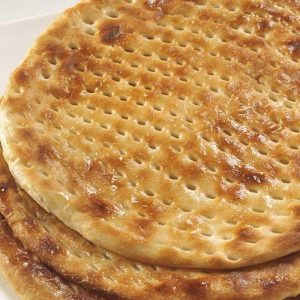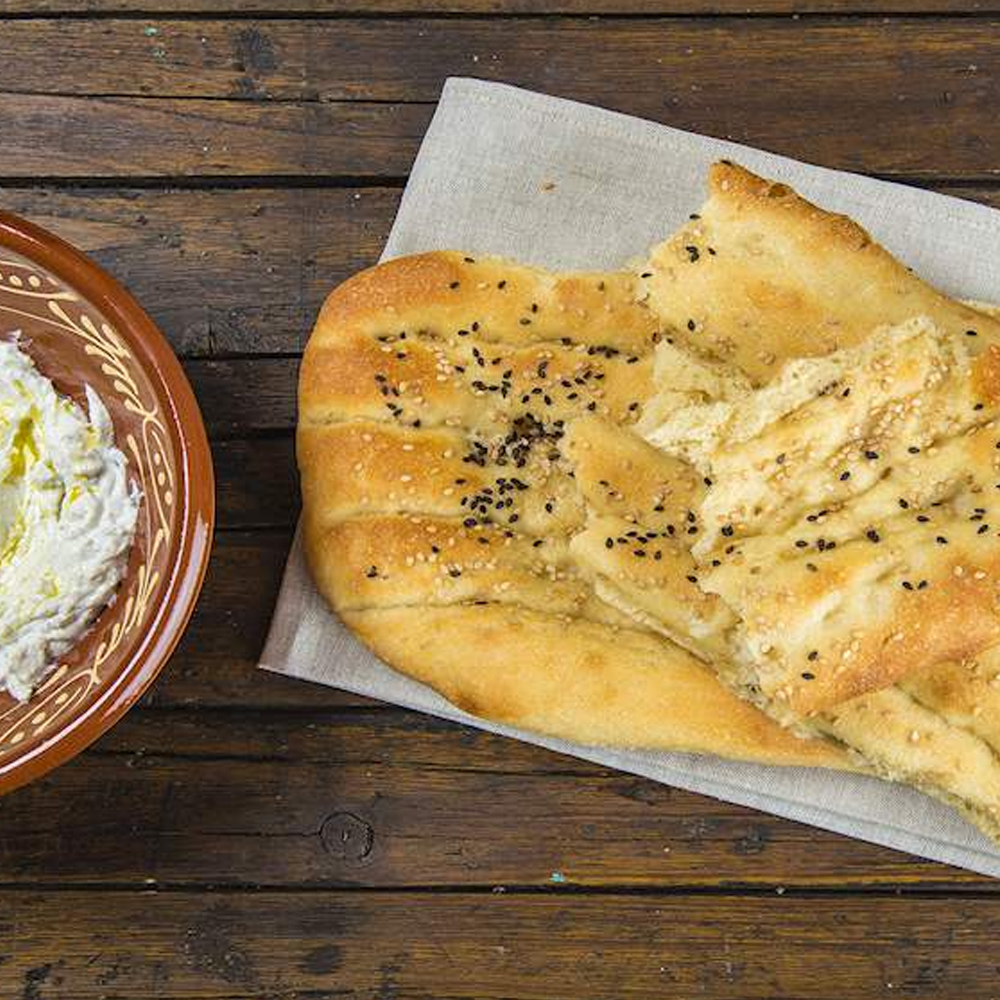Nan-e barbari
Nan-e barbari is an Iranian wheat-based, leavened flatbread. It is usually formed into a long oval shape that is traditionally brushed with roomal, a flour glaze which gives it a light golden crust, but keeps it light and airy on the inside.
Before it is baked in traditional tandoor ovens, the bread is usually sprinkled with poppy, nigella, or sesame seeds. The name barbari derives from the old disrespectful name used to refer to the Hazaras ethnic group. It is believed they were the ones who originally brought the tradition of preparing nan-e barbari to Tehran and other parts of Iran.
This crispy bread is a breakfast staple in Iran; it is best served freshly prepared and accompanied by creamy spreads, cheese, and a variety of fresh vegetables.
Nan-e sangak
Nan-e sangak is a whole wheat leavened flatbread and the national bread of Iran. Its shape can be either triangular or rectangular, and it comes in two main varieties: plain and special, which is topped with poppy and sesame seeds. The name sangak refers to the old method of baking the bread, meaning little stones, because it is traditionally baked in a dome-shaped oven with a surface full of pebbles and stones.
The bread can be prepared in a way that its length is about two feet, which is enough to feed a whole family. In the past, sangak was the main bread of the Persian Army, and each soldier carried a bag filled with pebbles, which were used to cook the bread for the whole army.
Today, sangak is often decorated when served, especially at festivities such as weddings and New Year. In Iran, the bread is often consumed with lamb kebabs, and it is a typical accompaniment to kale pache, a dish made with sheep’s head and feet.
Nan-e taftoon
Nan-e taftoon is an Iranian flatbread that is almost always prepared with whole wheat flour, milk, eggs, and yogurt. The dough is similar to pizza dough, resulting in a chewy, stringy texture. Traditionally, the dough is baked on the walls of a tandoor oven for about a minute, and is then removed from the walls with a metal skewer.
Nan-e taftoon is often flavored with cardamom or saffron, while some cooks like to sprinkle it with poppy seeds on top. The bread is mostly eaten with kebabs, but it can be consumed with virtually anything on the side, such as cottage cheese, tomatoes, and bell peppers.
Nan-e shirmal
Sheermal is a traditional Iranian flatbread made with maida flour, milk, saffron, and yeast. It is characterized by its strong saffron flavor and yellow color. The bread is traditionally baked in a tandoor oven and served warm, preferably with soups or meat dishes such as kebabs and curries.
The name sheermal means milk bread, referring to one of its key ingredients, imparting a slightly sweet flavor to the flatbread. For additional sweetness, some cooks like to add dried fruit into the dough. It is believed that sheermal has Persian roots, when numerous Persians traveled to India and Pakistan and learned the secrets of bread-making.

https://www.tasteatlas.com/

